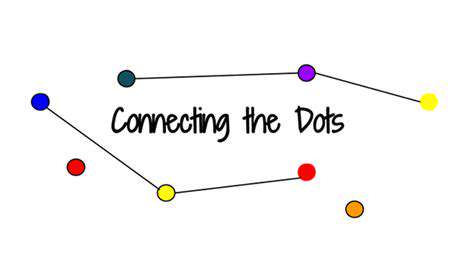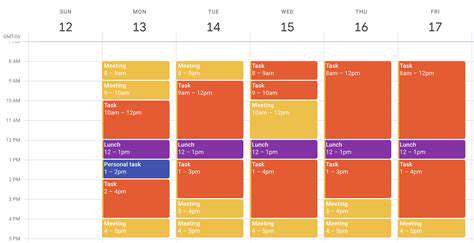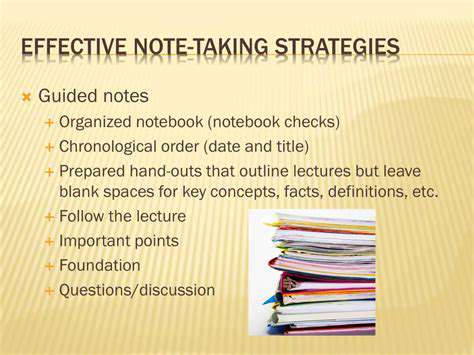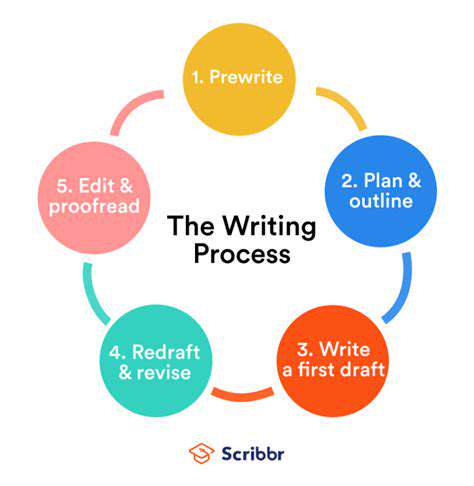Guide to Writing Effective Proposals
Structuring Your Proposal for Maximum Impact

Introduction and Background
A strong proposal begins with a compelling introduction that clearly articulates the problem or opportunity you're addressing. This section should establish the context for your proposal, highlighting the significance of the issue and providing necessary background information. Demonstrate your understanding of the current situation and how your proposed solution fits into the broader picture. This initial section sets the stage for the rest of your proposal, influencing how the reader perceives your ideas and the potential for success. Providing relevant data and statistics can further strengthen your argument and showcase your thorough research.
The background section should also clearly define the scope of your proposal and explain why it's necessary. This section needs to establish the need for the proposal and place it within the context of existing strategies or initiatives. Highlighting any potential challenges or obstacles will demonstrate a proactive approach and help you anticipate and address them effectively.
Problem Statement
Clearly articulate the problem you are addressing. This section should concisely and persuasively describe the issue, outlining its impact and consequences. Be specific and avoid vague language. Quantifiable data and examples are crucial to demonstrate the seriousness and scope of the problem. Provide enough detail to allow the reader to understand the problem fully.
Include relevant data, statistics, and examples to support the problem statement. Support your claim with evidence to convince the reader that a solution is necessary. This section should leave no doubt in the reader's mind about the importance of addressing this issue.
Proposed Solution
This section details the specific solution you propose to address the identified problem. Clearly explain the key components of your solution, outlining the steps involved and the expected outcomes. Be precise and avoid ambiguity. The reader should understand exactly what you intend to do and how.
Describe the key features and benefits of your solution and how it will address the identified problem. Outline the specific actions and strategies that will be implemented to achieve the desired outcomes.
Timeline and Budget
This section provides a realistic timeline for the implementation of your proposed solution. Outline key milestones, deadlines, and any dependencies. A clear timeline demonstrates your understanding of the project's scope and your ability to manage it effectively. A detailed budget is essential for financial planning and resource allocation. Clearly state all projected costs and justify each expense.
Evaluation Metrics and Reporting
Establish clear, measurable indicators to track the success of your proposed solution. Define specific metrics that will be used to evaluate the impact of the implementation. These metrics should be directly tied to the problem statement and proposed solution, offering a quantifiable way to assess progress and demonstrate the value of your proposal.
Outline the reporting mechanisms you will use to track and monitor progress. Detail how data will be collected, analyzed, and reported to stakeholders. This transparency fosters accountability and ensures that everyone is on the same page regarding the project's progress.
Conclusion and Next Steps
Summarize the key points of your proposal, restating the problem, proposed solution, and anticipated outcomes. Reinforce the value proposition of your proposal and its potential benefits. Emphasize the positive impact your solution will have on the organization or community. Conclude with a clear call to action, outlining the next steps required for approval and implementation.
Reiterate the importance of the proposal and its potential benefits. End with a strong statement that leaves a lasting impression on the reader and encourages a positive response.

Read more about Guide to Writing Effective Proposals
Hot Recommendations
- How to Stay Productive While Working Remotely
- Tips for Managing Conflict with Coworkers
- Entrance & Certification Exams (升学考试)
- How to Improve Your Storytelling Skills (Speaking)
- How to Find Profitable Side Hustles
- Tips for Preparing for the TOEFL iBT Home Edition
- Guide to Switching Careers from [Industry A] to [Industry B]
- How to Run an Effective Hybrid Meeting
- Tips for Marketing Your Side Hustle on Instagram











